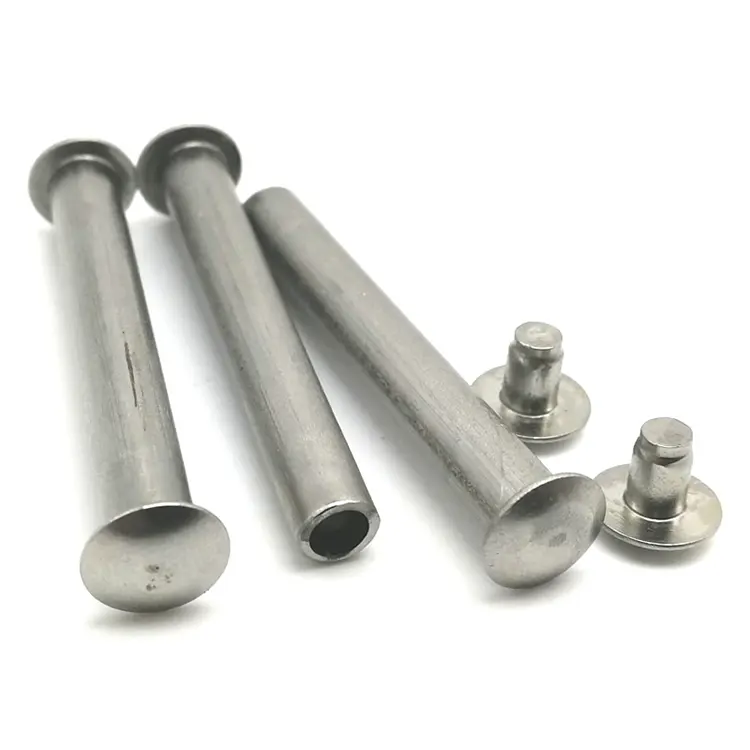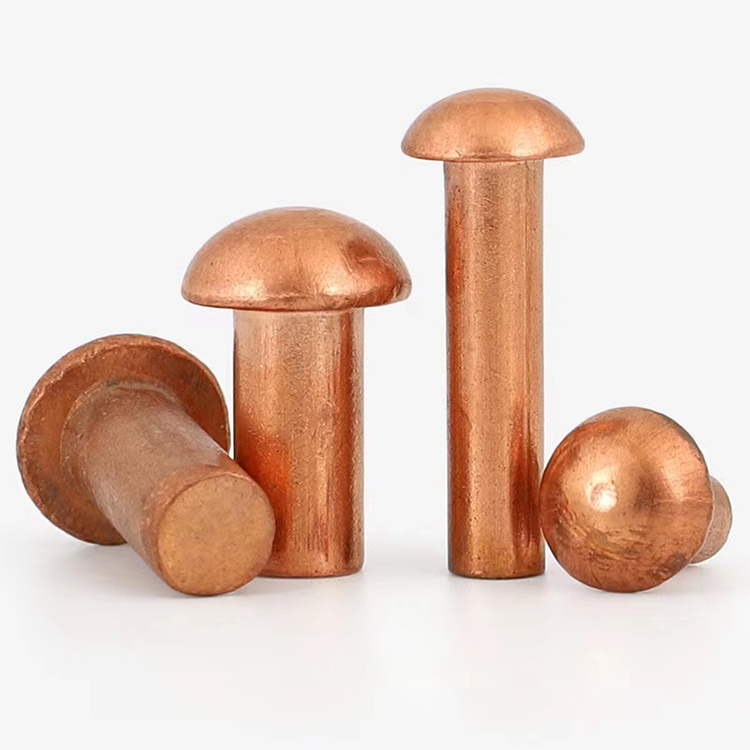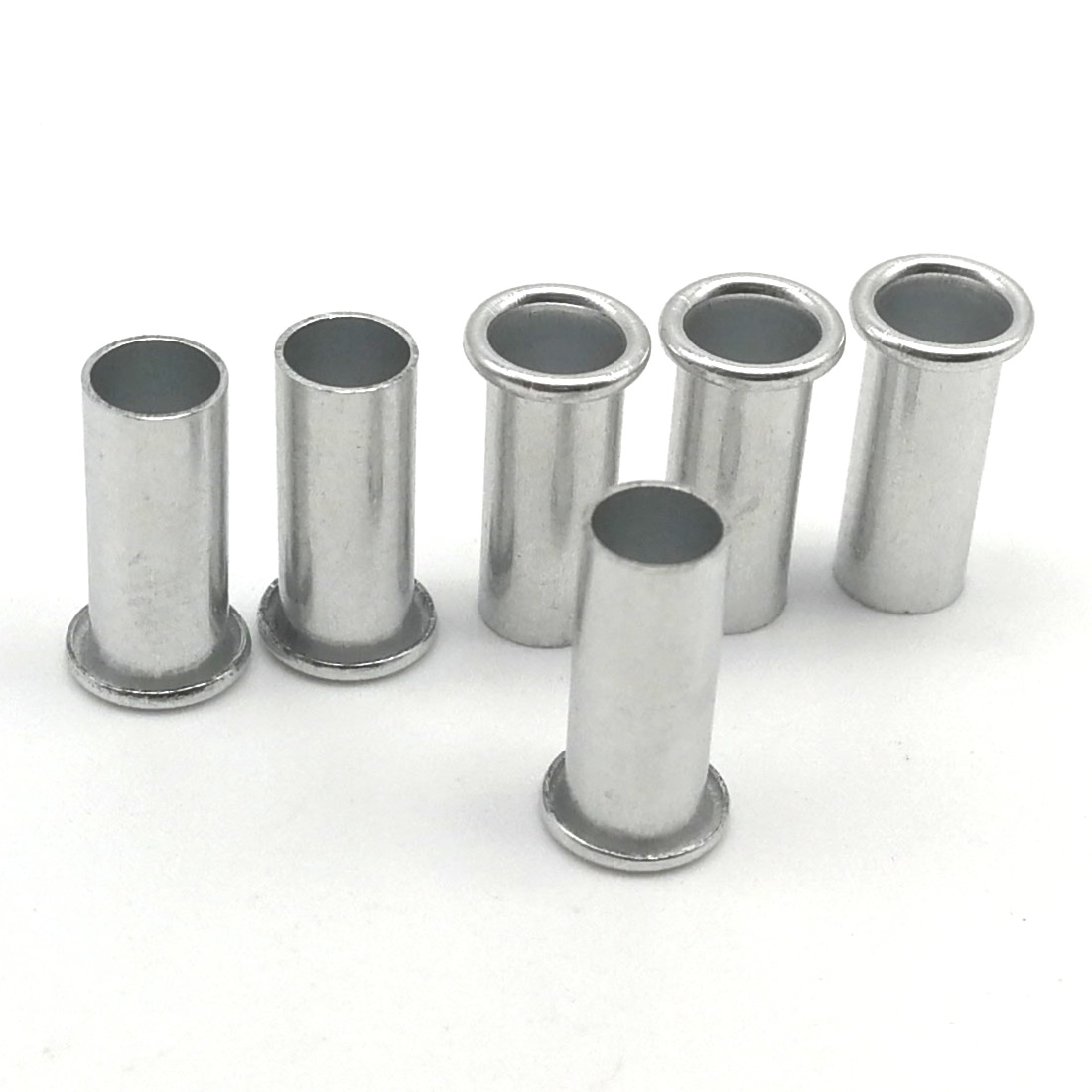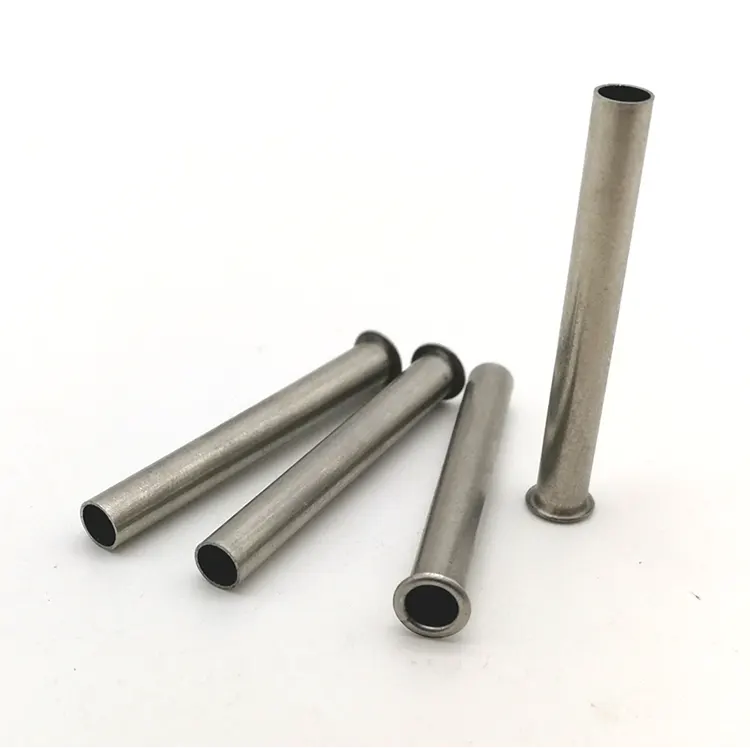Remaches tubulares completos
As one of professional high quality Full Tubular Rivets manufacturer, you can rest assured to buy Full Tubular Rivets from Notin and we will offer you the best after-sale service and timely delivery.
Full tubular rivets are also called as hollow rivets or tubular rivets, they are a common mechanical fastener, primarily used in applications requiring lightweighting or ventilation. Their structural characteristics are a completely hollow center with heads at each end, achieving connection through plastic deformation. Widely used in electronics, automotive manufacturing, aerospace, and other fields, they are favored for their unique structural design.
What is a hollow rivet?
A full tubular rivet consists of a shank and a head. The shank has a through hole in the center, and the head is typically round or oval. During installation, the rivet is inserted through the materials to be joined, and the tail is expanded using a specialized tool to form another head, securing the materials together. Because of the hollow center, full tubular rivets maintain ventilation or fluid conduction after connection, which is their primary difference from solid rivets.
What materials can full tubular rivets be made of? What are the characteristics of different materials?
full tubular rivets are made from a variety of materials, with aluminum alloy, stainless steel, and copper being common.
Aluminum tubular rivets are lightweight and corrosion-resistant, making them suitable for electronic products and lightweight structures. They are the most cost-effective rivets.
Stainless steel tubular rivets are strong and heat-resistant, and are often used in automobiles and industrial equipment. They are more expensive than aluminum hollow rivets.
Brass tubular rivets or copper tubular rivets have good conductivity and are mostly used for electrical connections. Their disadvantage is that they are relatively expensive.
When selecting materials, factors such as the use environment, stress conditions, and cost should be considered.

Installation method of full tubular rivets
Special tools are required to install hollow rivets, such as manual riveting machines or fully automatic assembly machines.
The operation steps are as follows:
(1) Drill a hole in the material to be connected, with the hole diameter slightly larger than the rivet diameter.
(2) Insert the rivet into the hole, ensuring that the head is close to the surface of the material.
(3) Align the rivet hole with the matching punch (the punch is installed on the riveting machine). (4) Shake the riveting machine so that the tail of the rivet is impacted by external force and curls up, forming the same arc as the head, thereby achieving the fastening function.
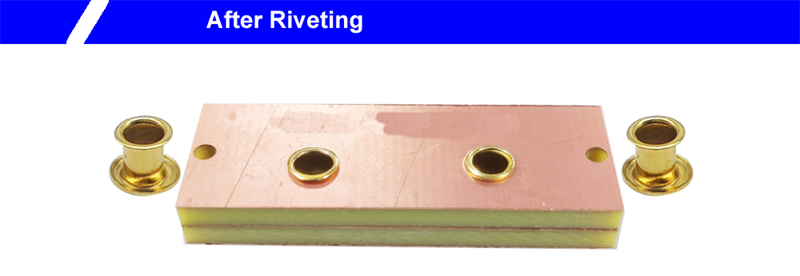
Advantages of Full Tubular Rivets
(1) Light weight: The hollow structure reduces the amount of material used and is suitable for weight-sensitive applications.
(2) Good air permeability: The through hole in the middle can be used for ventilation or diversion to avoid sealing problems.
(3) Easy installation: Only one-side operation is required, which is suitable for narrow spaces or occasions where the back cannot be accessed.
(4) Low cost: Compared with welding or bolting, the riveting process is simple, saving time and manpower.
Disadvantages of Full Tubular Rivets
(1) Limited strength: The hollow structure leads to weak tensile and shear resistance, which is not suitable for high-load scenarios.
(2) Non-removable: Once installed, the rivet is usually not reusable, and disassembly will damage the connection.
(3) Requirements for material thickness: Materials that are too thin or too thick may affect the riveting effect.
What are the main applications of hollow rivets?
(1) Electronic products: such as computer cases, radiators, etc., taking advantage of their lightweight and air permeability.
(2) Automotive manufacturing: used for non-load-bearing parts such as interior panels and wiring harness fixings.
(3) Aerospace: reduce weight while meeting some ventilation needs.
(4) Furniture assembly: connect metal or plastic parts and simplify the installation process.
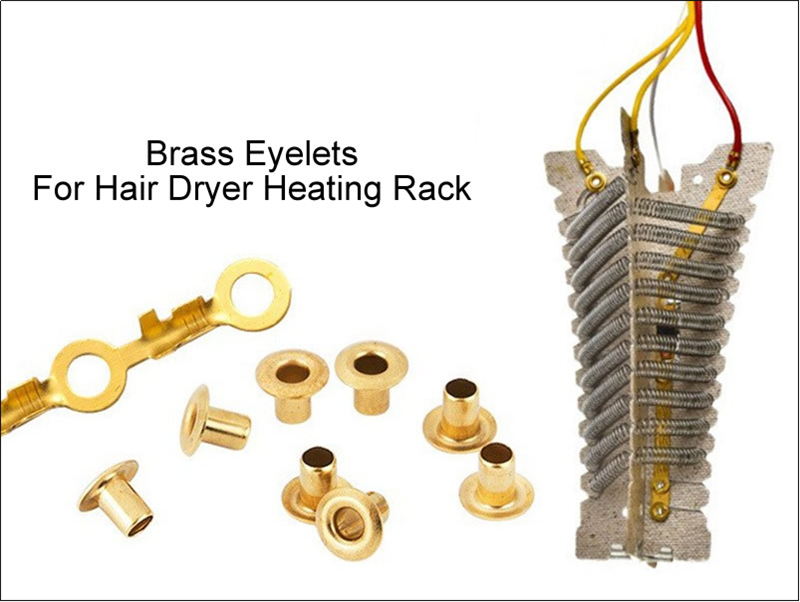
Comparison between hollow rivets and other rivets
(1) Compared with solid rivets: full tubular rivets are lighter and breathable, but have lower strength.
(2) Compared with semi-tubular rivets: the tail of semi-tubular rivets is partially hollow, with slightly higher strength, but the ventilation is not as good as full hollow rivets.
(3) Compared with blind rivets: the mandrel of blind rivets remains after installation, while the mandrel of full hollow rivets is completely detached, making the connection neater.
Suggestions for purchasing full tubular rivets
(1) Select rivets of appropriate length according to the thickness of the material to ensure that they can fully expand after installation.
(2) Consider the use environment. For example, corrosion-resistant or high-temperature resistant materials should be selected for humid or high-temperature conditions.
(3) Before purchasing in bulk, you can try it out first to confirm the riveting effect and tool compatibility.
Maintenance and precautions for full tubular rivets
(1) Avoid excessive force during installation to prevent rivet deformation or material damage.
(2) Regularly check the connection parts and replace them in time if they are loose or rusted.
(3) Keep them away from moisture during storage to prevent oxidation of the rivet surface that affects their use.
As a practical connector, full tubular rivets have irreplaceable advantages in specific scenarios. Understanding their characteristics and application methods will help you choose and use them reasonably in actual work, improving work efficiency and connection quality.
- View as
Remaches huecos de aluminio
El remache hueco de aluminio es un sujetador común y se usa ampliamente en muchos campos debido a su peso liviano, resistencia a la corrosión y buena conductividad eléctrica. Nuote Metals produce y vende remaches huecos de aluminio en China, tenemos más de 10 años de experiencia laboral en esta industria.
Leer másEnviar ConsultaRemaches de tubo de acero
Los remaches del tubo de acero son un tipo de sujetador de metal que logra la conexión a través de la deformación del estampado. Consisten en una varilla tubular hueca y una cabeza de tapa final, y pertenecen a la categoría de sujetadores huecos en el campo de la ingeniería mecánica. Los metales nuotos ofrecen este tipo de remaches de tubos de acero en Dongguan, China, durante más de 10 años. Bienvenido para enviarnos su diseño.
Leer másEnviar ConsultaRemaches huecos de acero
Nuote Metals se especializa en la producción de remaches huecos de acero. Estamos ubicados en Dongguan, China. Hay dos técnicas principales para producir remaches huecos de hierro. Una es usar tuberías de hierro, que es adecuada para remaches más largos. La desventaja es que el requisito mínimo de cantidad de pedido es relativamente alto. El otro es usar técnicas de dibujo profundos. Daremos sugerencias apropiadas sobre qué técnicas usar en función de las circunstancias específicas del cliente.
Leer másEnviar ConsultaRemaches de tubo de acero inoxidable
Nuote Metals produce remaches de tubo de acero inoxidable en China, los remaches de tubo de acero inoxidable son uno de los conectores de uso común. Debido al diseño hueco, son pequeños en tamaño y peso de luz, pueden soportar una mayor presión y cargas de tracción sin romper o deformarse y tienen una buena resistencia a la corrosión y resistencia a la oxidación, por eso son adecuados para su uso en diversos entornos.
Leer másEnviar ConsultaRemaches huecos de acero inoxidable
Los sujetadores juegan un papel crucial en la industria manufacturera, y los remaches huecos de acero inoxidable, con su diseño estructural único, se utilizan ampliamente en múltiples industrias. Ofrecen una fuerte resistencia a la corrosión, un peso reducido y una mayor resistencia. Estas características les permiten resistir entornos operativos más duros, extender la vida útil del producto y mejorar el rendimiento.
Leer másEnviar Consultaremaches de tubo de cobre
Los remaches para tubos de cobre están hechos principalmente de cobre, un material de alta pureza que contiene pequeñas cantidades de otros elementos como oxígeno y fósforo. El cobre tiene una excelente conductividad eléctrica y se utiliza a menudo en conectores eléctricos. El diseño estructural del remache tubular le permite deformarse durante la instalación para asegurar el material, creando una conexión segura. La suavidad del cobre hace que los remaches de tuberías de cobre sean menos susceptibles a agrietarse durante la instalación y proporciona excelentes propiedades de sellado. El cobre también es altamente resistente a la corrosión y mantiene la estabilidad en ambientes húmedos, ácidos y alcalinos, lo que extiende su vida útil.
Leer másEnviar Consulta
